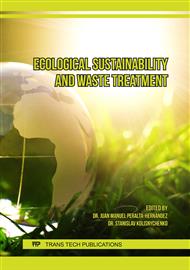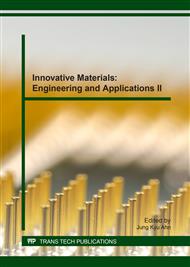p.435
p.440
p.445
p.452
p.457
p.463
p.473
p.479
p.489
A Study on CO2 Emissions in End-of-Life Phase of Residential Buildings in Korea: Demolition, Transportation and Disposal of Building Materials
Abstract:
Architecture and building industry have been made diversified efforts to create a construction environment that promotes resource recycling. Many studies have been done to better understand and reduce energy consumption and CO2 emissions throughout a building’s lifecycle. However, to promote sustainable development and a construction environment that facilitates resource recycling, more understanding and research is needed on energy consumption and CO2 emissions during the stage of dismantling a building. Noting that, this research investigates CO2 emissions in a building’s End-Of-Life (EOL) phase that includes dismantling of a building, transport and disposal of the waste generated in the course of dismantling residential buildings in Korea. According to the results of this study, CO2 emissions in a building’s EOL phase was 3,561kg CO2/100m2 for apartments, 3,184 kgCO2/100m2 for brick houses and 1,137 kg CO2/100m2 for wooden houses. The results showed that transport and disposal process of demolition waste accounts for 90% of all CO2 emissions in a building’s EOL phase. From this finding, it is necessary to have a proper, effective strategy for transport and disposal of demolition waste from dismantled buildings’ in order to reduce CO2 emissions during a building’s EOL phase.
Info:
Periodical:
Pages:
457-462
Citation:
Online since:
February 2017
Authors:
Keywords:
Price:
Сopyright:
© 2017 Trans Tech Publications Ltd. All Rights Reserved
Share:
Citation:



